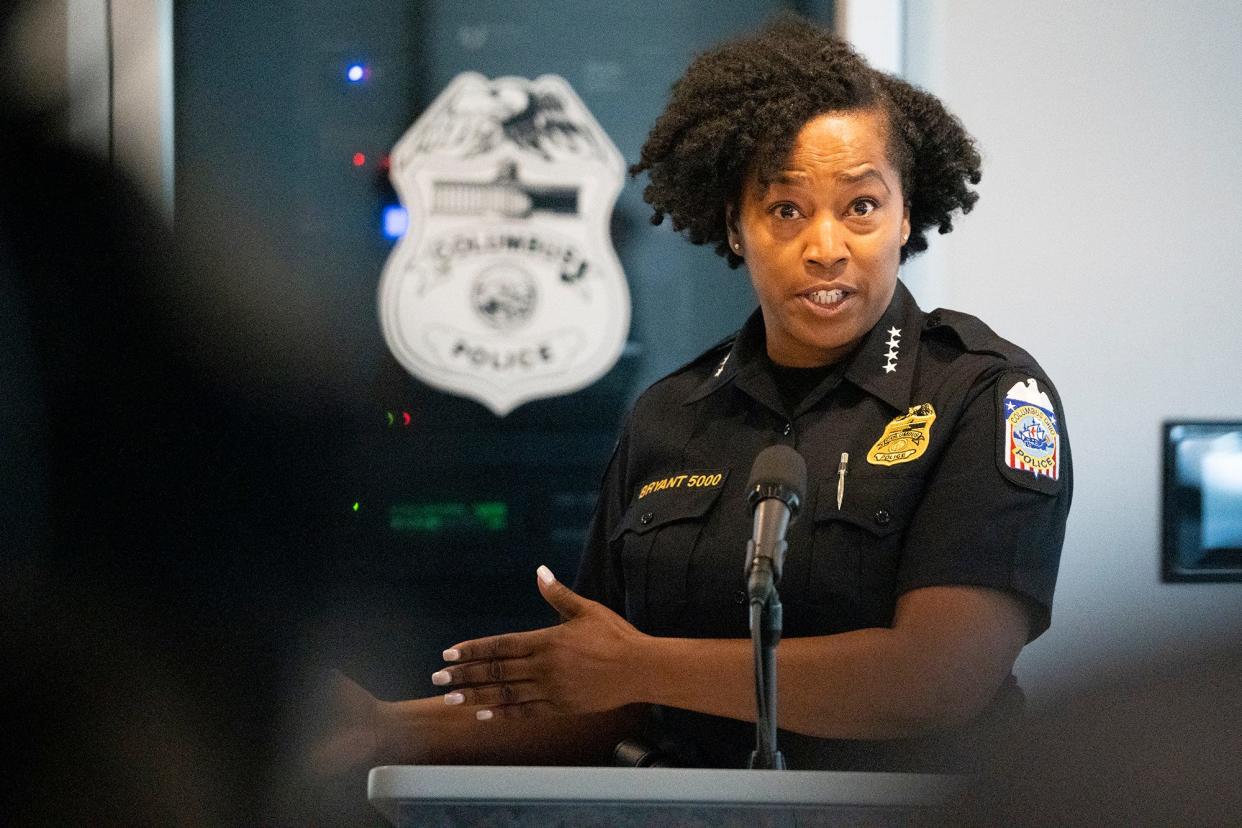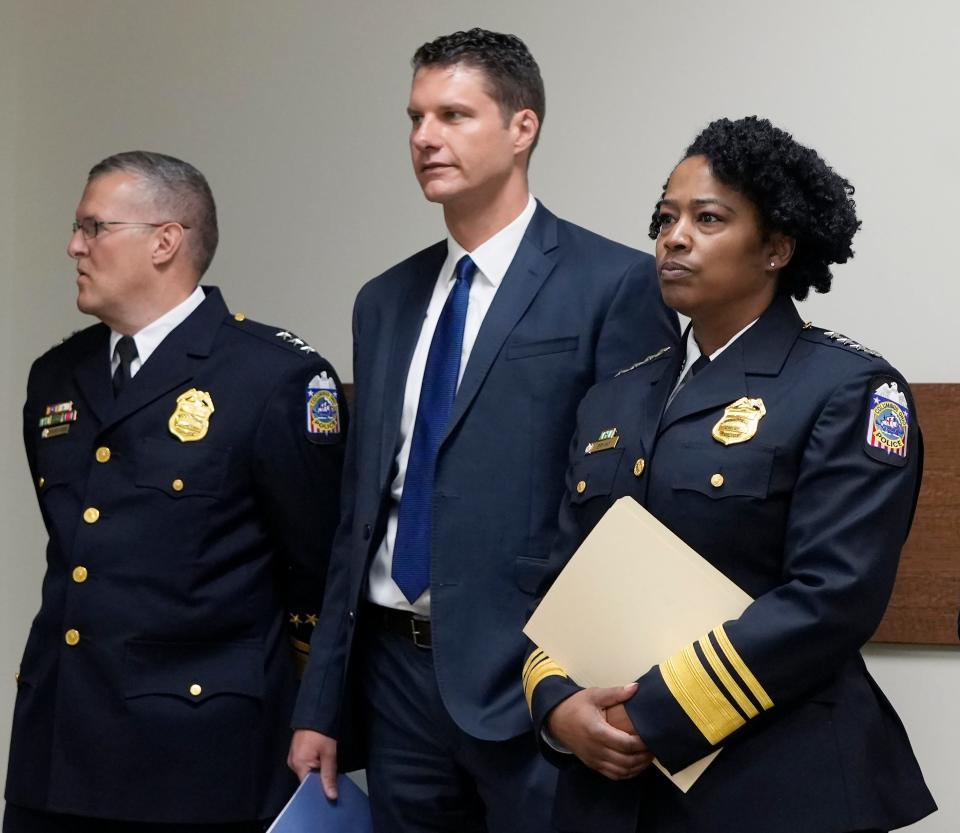Columbus city attorney explains why names, bodycam video from police shootings is limited

Columbus police and the Franklin County Sheriff's office released parts of the body camera footage on Thursday from a Saturday night shooting that left a 45-year-old man dead.
But police are not releasing the names of the four officers or the deputy who fired at Antwan Lindsey.
The names of the eight officers involved in a fatal shooting on July 6 on Interstate 70 are also not being released. Body camera footage in that shooting is also not being released.
In both cases, police are citing the implementation of Marsy's Law, which went into effect in April that protects the rights of victims of crime.
City Attorney Zach Klein said Thursday the law has put his office in a tough position.
"This is not something we take lightly," he said. "From a following the law standpoint, the lack of disseminating the name, it's not something we're doing in a vacuum."
However, concerns have been raised that Klein and police are picking and choosing what to release, particularly in light of body camera footage being released from an April 29 incident during which someone shot at Columbus officers and video from a shooting in the Short North that showed shots being fired, along with the names of the officers who shot back.
An amendment to Marsy's Law was added to Senate Bill 16, related to liability for donations to food pantries, that went into effect the first week of July. That change requires police to automatically withhold the name of a person who is a victim of a violent crime, including police officers, unless that victim explicitly allows their name to be released. Ohio law states that if a police officer is fired upon, they are the victim of an attempted murder or felonious assault, which is a crime of violence and their name is withheld.

Klein said lawyers from his office and others met with state lawmakers, including Rep. Andrea White, R-Kettering, who was the main sponsor of Marsy's Law, when it was being amended to explain the possibility of a situation like Saturday's shooting, in which someone shoots at police and they return fire.
As the law is written now, the public may want the officers' names to be released, but the law does not make any exceptions for police who are crime victims, Klein said.
"The legislature chose to act despite being given the knowledge and information that experienced officers and lawyers gave them. That was their decision," he said.
Klein said the only remedy would be another amendment to the law or a legal challenge in court.
White said that when the constitutional amendment for Marsy’s Law in Ohio was on the ballot in November 2017, 83% of voters approved it. The language in the constitutional amendment is what defines a victim and does not have any exceptions for victims based on their profession.
House Bill 343, passed last year, created a statutory framework for implementation, which was streamlined through SB 16 earlier this month, she said. That process does not change the definition of victim and does not add any rights. It all relates to how victims received information and what crimes required what types of notifications.
“This is a constitutional issue because the constitution is what defines a victim,” she said. “People who are victims are afforded equal rights whether or not they’re law enforcement.”
The General Assembly does not have the ability to change the definition of a victim through passage of a law, White said. Should the people of Ohio want to create an exception for law enforcement, she said, another constitutional amendment would need to be passed or a legal challenge would have to make its way through the court system.
In addition to Marsy’s Law, Klein said a part of Ohio Revised Code that regulates what documents are public records and can be released prevents the release of the body camera footage from an exchange of gunfire between Columbus police and Abdisamad Ismail, 19, on Interstate 70.
Because a Columbus police officer suffered a "grievous bodily injury," the footage is an exception to the Ohio Public Records Act, Klein said.
"We are in a box legally of what we can provide," he said.
In a statement Thursday, Columbus police reiterated what Klein said.
"We want to be clear: this was not a choice made by the Columbus Division of Police," the statement said. "It is a state law by which we (and all other agencies) are required to abide and uphold. In fact, this was a concern CPD raised with state lawmakers."
Columbus police also said the release of the body camera in the shooting that left Ismail dead had to be denied in its entirety because of a portion of Ohio public records law that requires footage that shows "grievous bodily injury" to an officer be withheld from the public.
In general, any camera footage that shows someone being seriously injured is not a public record, unless a police officer, corrections officer or certain other state employees caused the injury, according to the law.
bbruner@dispatch.com
@bethany_bruner
This article originally appeared on The Columbus Dispatch: Columbus city attorney explains why police bodycam video is limited

